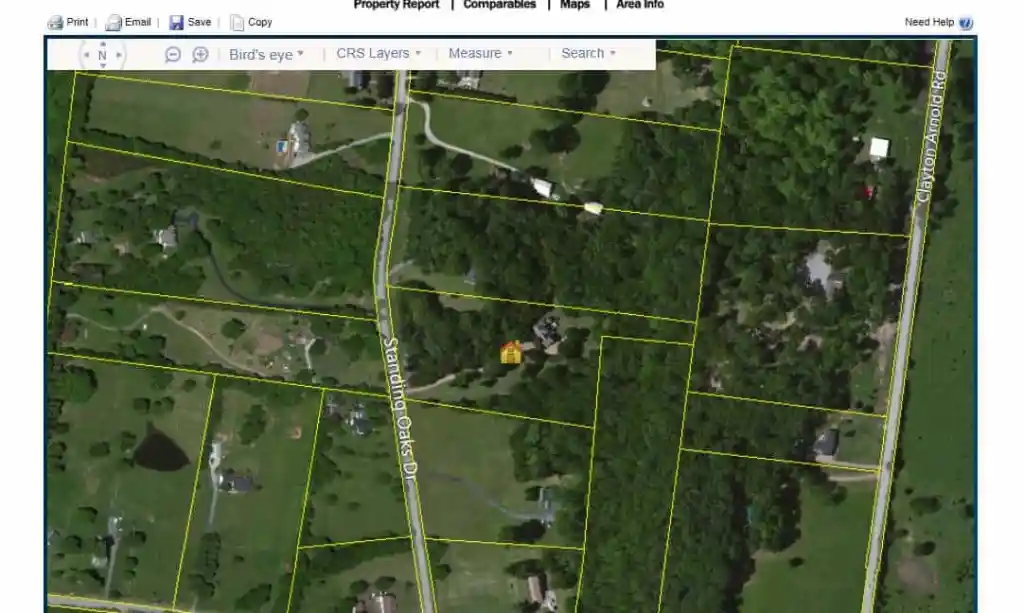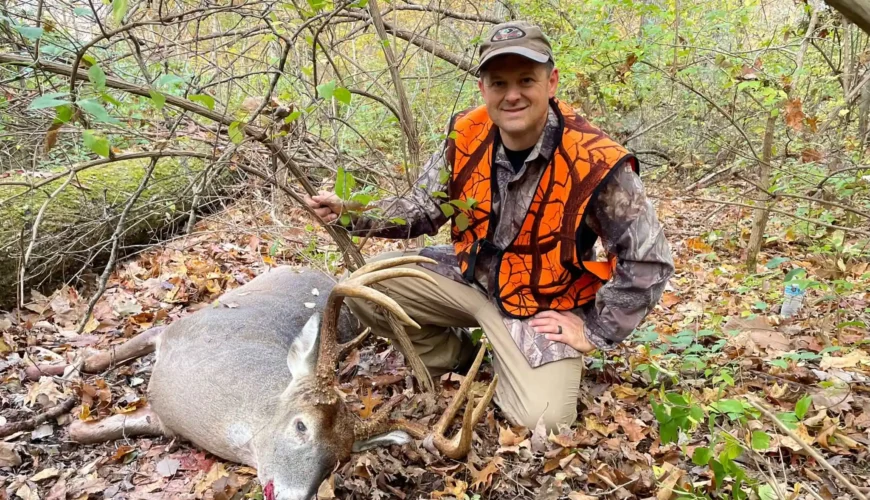Tactics
Sporting Clays Technique: How To Deal With Teal
November 24, 2025 •Mark Chesnut
June 18, 2025
There is no lack of content written on how to manage large and medium size properties for deer hunting. However, much less is written on micro-properties of 10 acres or less, especially in suburban areas. This is because not many people have the knowledge and experience finding, managing and hunting micro-properties successfully. And even more people think it would be a waste of time anyway. Let me assure you, it isn’t.
After purchasing a six-acre micro property seven years ago, I’ve seen the potential these types of properties have to attract and even grow mature bucks. I’ve also been blessed to successfully harvest four mature bucks over the past five years on this small tract, and I’ve found four keys that have been critical to my success.
The first key is finding the right micro-property, which can be like finding a needle in a haystack. The biggest challenge is often having the patience to wait until you truly find that hidden gem. I was looking for a five-to-10-acre property where I could build a house to raise a family and hunt successfully. I also wanted a property that had more woods than fields, which is more challenging to find in my area. Unfortunately, most of the small, wooded properties wouldn’t perk.
After looking at countless property searches and properties over a couple of years, I finally found a real gem. The land was roughly five acres of woods and had a little over one-acre of fields. It was also a hub of several ridges and woodlots that came together to form a natural funnel. However, it already had a house on the property. Sometimes you must be flexible to get what you want. Fortunately, the house plan was very similar to what we were wanting to build.

Finding the right property, whether buying or leasing, takes time and homework.
Next is to manage the property to increase its potential to attract and hold does and mature bucks. There is plenty of food available in the area during the summer. Therefore, I focus on planting food plots that will attract and hold deer from the fall through early spring. The front and back fields also had healthy stands of white clover that provided a good fall food source. However, I’ve found that clover works best when paired with a winter grain.
With that in mind, I supplemented it by planting winter rye in late September and two additional layers in October. I planted it in a long strip 100 yards by 30 yards alongside the woods in the front field. I also planted it in a 1/4-acre plot in the corner of the back field next to the woods. This approach allows the does to bed in the thick cover that is next to both food plots. The bucks will bed in the cover that is further back in the woods away from the does until the rut hits.
You must also let the bucks go to let them grow. The property already held several does and a few young core bucks when I purchased it. Quite a few young non-core bucks would also check the area during the rut. I passed on all of the young bucks for the first two seasons after buying the property. This is another exercise in patience to let the bucks grow to maturity, which is at age four. Of course, this only works if your neighbors either don’t hunt or follow the same mindset because your deer on such a small property will wander onto theirs at some point. Fortunately, many of today’s hunters are educated on how to grow big bucks and are okay letting them walk to become bigger. Get to know your neighbors and discuss your philosophy and learn theirs. It’s best to have some agreement if everyone is hunting in close proximity for management as well as safety purposes.
Thankfully, I don’t have much competition along my borders, and my patience paid off in spades. In the third year I started to see several 3-year-old bucks and one mature 4-year-old buck. At year four, I started seeing several 4-year-old bucks and one 5-year-old. I take pride in watching the buck age-class increase and seeing the tremendous growth in their body size and antlers.
Last and most important is to hunt the property carefully and wisely to kill mature bucks. This requires much patience and restraint during the season. I am very selective when choosing the days that I hunt. I focus on hunting the back side of cold fronts during the pre-rut and peak rut periods. Furthermore, the worse the weather is before the cold front hits the better (rain, wind, warm temps, etc.).
It is way too easy to educate and spook a mature buck by hunting him too often. Hunting after major cold fronts helps me focus my time on when a buck moves the most during daylight. The added benefit of living on the property is that I can observe the deer when not hunting. This allows me to confirm when the mature bucks get involved in the rut daylight movement.

Hunting small properties can produce big success, but you have to have patience to let bucks grow…and hope your neighbors do too! Brent Spicer Photo
When the time is right, I hunt in the woods next to the food plots. I hunt them mainly in the morning, waiting until after daylight to allow the does to leave the plot. It’s not unusual to see 6 to 10 different bucks cruising the nearby woods during a pre-rut morning hunt when a cold front hits. I can hunt these spots effectively with a bow or firearm.
For afternoon hunts, I’ve found it most effective to hunt in a blind 75-100 yards away from the food plot. I can watch the deer filter into the food plot and feed before dark without spooking them. During the rut, it’s just a matter of time before a mature buck comes into the plot to scent-check the does. Most importantly, I can also exit the blind at dark after the deer have exited the food plot without spooking them.
I’ve been blessed to harvest four mature bucks on the property over the past five years using these hunting strategies. The first buck I harvested was tending a doe in the woods beside the front food plot on a cold mid-November morning. I was able to harvest him with a .300 Blackout bolt gun from a ground blind. The second buck was chasing does in the back food plot on a cold front afternoon during the rut, and I was able to harvest him with a muzzleloader. His 9-point rack was not huge, but the size of his 220-pound body made it obvious that he was mature.
The third buck was tending a doe in the evening during the peak rut in November. I was able to kill him with a crossbow the following morning in the woods near the back corner food plot. I watched him over three years until he reached five years old. His unofficial green score is 134 inches as a heavy main-frame 8-point, putting him in Pope & Young class.
Most recently, I harvested an 11-point buck scent-checking some does in the back food plot during the second rut with a 6.5 Creedmoor rifle. I also included a trail cam pic of that deer from the year prior. His body was emaciated due to a leg injury most likely caused by an automobile on a nearby road. The quality of the bucks keeps getting better each year as the average age class increases combined with better nutrition. You can employ these same strategies successfully on your micro-property, whether you plan to get hunting permission or to purchase your own.

Buying a home on five to 10 acres of land or more can make accessing your stand quick and easy, sometimes even from your own yard. Brent Spicer Photo
